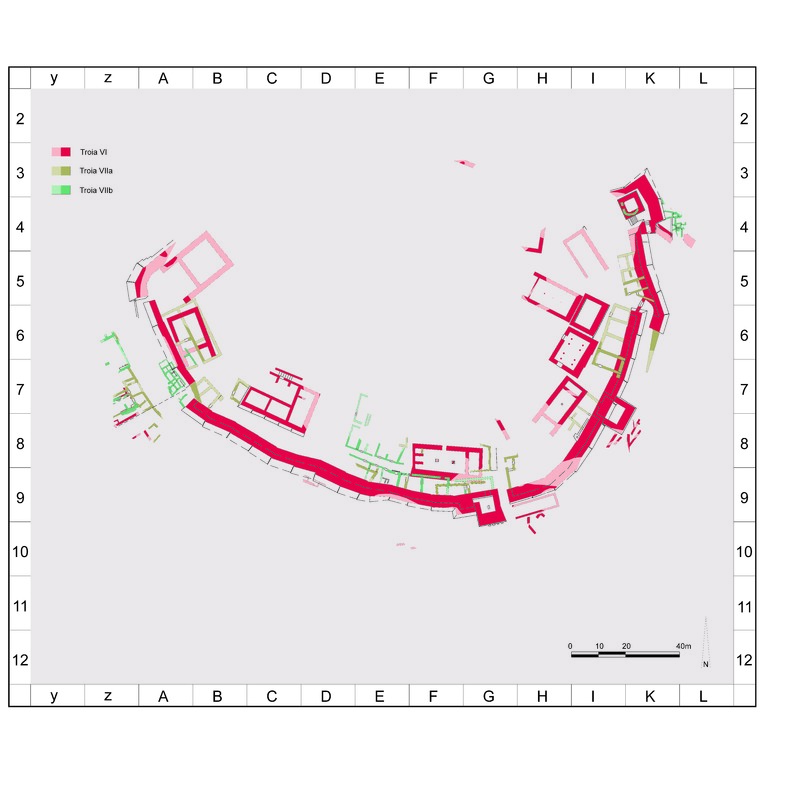Troy VI-VII (1800-1000 BCE)
Previous scholars believed that Troy VI witnessed the arrival of new people to the site because of new and advanced architecture, changes in the design of spinning whorls, new styles in pottery, and the introduction of the horse. The city grew substantially with the walls being a major highlight. Tan Ware and Grey Ware became popular pottery styles, named because of their colors. Troy was destroyed by an earthquake but was rebuilt hastily.
The inhabitants of Troy VI seem to have returned after its destruction, based on similar pottery and architectural styles. Towards the end of Troy VII, Blegen speculated that new inhabitants arrived, and that their origins were likely from Southeast Europe, based on a distinctive handmade pottery known as Knobbed Ware because of its knob and horn decorations. This Troy was also destroyed by a fire and marks a break of a substantial settlement at Troy for some time. Because of the fiery destruction of this city, Blegen believed it represented Homer’s Troy.
